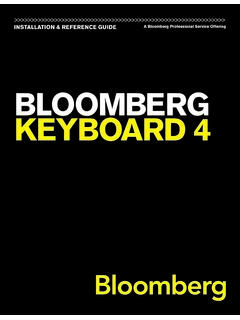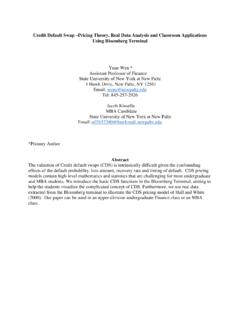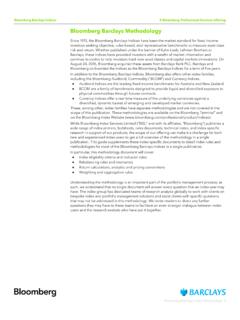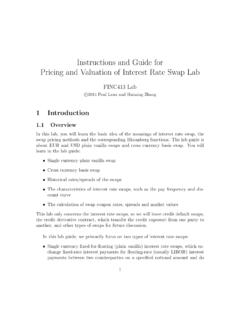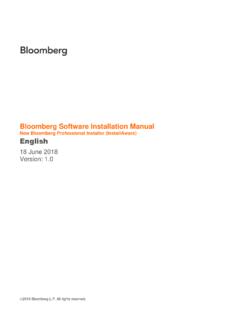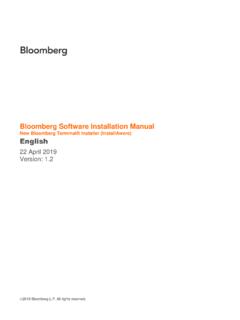Transcription of Lithium-ion battery costs & market
1 Lithium-ion battery costs and MarketSqueezed margins seek technology improvements &new business modelsClaire Curry July 5, 2017 These are sample slides from proprietary BNEF reports. See slide 11 for more 20, 2017 Executive Summary1) Oversupply is depressing battery prices. Passenger EV sales were lower than expected in 2011-H1 2015, meaning demand for Lithium-ion batteries was low. The manufacturing industry suffered and is still suffering --from oversupply. To increase utilization, manufacturers have been lowering prices and competing fiercely with one ) Tightening of the battery market . However, BNEF forecasts large demand growth for Lithium-ion batteries, and battery manufacturers have announced further capacity build despite oversupply.
2 They need to attract investment for this, although revenue from sales is still quite low, and say how they plan to make a profit from the new ) Supply chain economics will make it tougher to meet the supply chain in place, the battery market will not be able to meet future demand. The supply chain for battery components (cathodes, anodes, electrolyte and separators) is a complex business. There s a looming shortage in production capacity for components, particularly the separator. EV sales growth in China, in particular, is creating separator supply ) What s in store? Further battery price forecasts Lithium-ion battery pack prices will continue to fall to as little as $73/KWh. 5) Implications on company strategy: battery manufacturer strategy.
3 Producers need to improve margins on battery manufacturing to attract new investment. They can do this by improving technology to reduce production costs to bring down their cost forecasts. They are also entering the stationary storage market aggressively to increase market company strategy. Car companies want to reduce battery prices to improve their vehicle economics. They can do this by signing large, long-term contracts with suppliers; by entering other battery markets, and repurposing used EV batteries for a 20, 2017 Notes: This includes cells plus pack prices. For years where there were two surveys, the data in this chart is an average forthe year. Source: Bloomberg New Energy FinanceThe price of Lithium-ion batteries in 2016 was$273/kWh a drop of 73% since $/kWh The steep decrease in prices in the past few years is in part due to technology improvements and economies of scale.
4 However, fierce competition between the major manufacturers has been instrumental in bringing down prices. BNEF Lithium-ion battery price survey, 2010-16 ($/kWh) 3 June 20, SDIG uoxuan High-TechCATLAESCP anasonicBYDLG ChemSource: Bloomberg New Energy Finance. Lithium-ion battery sales for passenger EVs are picking up, but installed capacity is still much larger. Passenger EV sales were lower than the market expected from 2011 to H1 2015, meaning that Lithium-ion battery sales were also lower than forecast. But 2016 and 1H 2017 have seen an increase in passenger EV sales, leading to quarterly battery demand of more than 6 GWh. Panasonic has dominated sales due to its relationship with Tesla Motors.
5 BYD has grown its market share significantly while AESC supplying to the Nissan Leaf shrinks. In 2016, new EV sales consumed over 20 GWh, while installed capacity was five times this size. Demand for batteries from electric buses far outstripped that of other passenger vehicles in 2016. Installed Lithium-ion battery manufacturing capacity, Q1 2017 (GWh) Total: 103 GWh4 June 20, 2017 BNEF sees strong growth in passenger EV demand and the Lithium-ion battery marketIn its EV sales outlook, BNEF forecasts annual demand for Lithium-ion batteries from new EV sales of 408 GWh in 2025 and 1,293 GWh in 2030As well as demand from EVs, stationary-storage market demand will be 65 GWh in 2025. BNEF forecasts behind-the-meter stationary storage alone will top 200 GWh in 2030.
6 Forecasted demand for Lithium-ion batteries from EVs, 2010-30 (GWh) 19 123 408 1,293 02004006008001,0001,2001,400201520202025 2030 FranceUKGermanyJapanRest of WorldRest ofEuropeUSChinaGWhSource: Bloomberg New Energy Finance. 5 June 20, 2017 Source: Bloomberg New Energy FinanceDespite overcapacity, plants continue to get built BNEF s proprietary battery manufacturing capacity tool illustrates commissioned, under construction and announced battery plants. The tool shows an additional 154 GWh of capacity will get built in the next five years, bringing global capacity to 273 GWh by 2021. battery manufacturers agree with our growth projections and think demand from EVs and stationary storage will rapidly increase.
7 This means that battery companies, no matter how poor their sales to date have been, are raising money to build new capacity. Ultimately, this is driving them to reduce battery prices, in order to sell more batteriesand increase utilisation, to ultimately show investors it is important that they expand manufacturing capacity. 6 June 20, 20171,6972,0613,105201520162017 China Tier-2 AutomotiveSmall LiBBut without the supply chain in place, the battery market will not be able to meet demand Batteries are made of cathodes, anodes, electrolyte and separators Each have their own complex supply chain There is a looming shortage in production capacity, and a lack of producers, for a few of the .. especially the separator.
8 Making separators is a complex, low margin business. The growth in sales of EVs in China may be the cause of separator supply bottlenecks2,205 2,616 2,764 201520162017 USSouth KoreaChinaJapanSeparator salesSeparator manufacturing capacity+6%+51%Million m2 Million m2 Source: Bloomberg New Energy Finance, Techno Systems Research Co. This is just a selection of the detailed component database BNEF provides to clients on cathodes, electrolytes, anodes and separators. The database shows plant-by-plant data and market share information on manufacturers. BNEF s regional analysts track the status of the Chinese EV and battery market in depth. 7 June 20, 2017 Source: Bloomberg New Energy Finance BNEF forecasts Lithium-ion battery pack prices will fall to as little as $73/kWh Intense price competition is leading manufacturers to develop new chemistries and improved processes to reduce production costs .
9 Production costs have also come down significantly. Our models calculate that producing a battery in a Korean manufacturing plant in 2017 costs $162/kWh, dropping to $74/kWh in 2030. The BNEF battery price survey provides an annual industry average battery price for EVs and stationary storage. The learning rate (the price decrease for every doubling of capacity) is 19%.01002003004005006007008009001,000201 0201220142016201820202022202420262028203 0$/kWh BNEF observed values: annual Lithium-ion battery price index2010-16 8 June 20, 2017 Batteries are the main reason why passenger EVs are more expensive than ICEs today Source: Bloomberg New Energy FinanceBEV and ICE pre-tax prices in the for medium segment price, 2010-2030 (thousand 2016$ and %)48%42%36%31%27%24%21%18%05101520253035 404520162018202020222024202620282030 BatteryPowertrainVehicleICE medium9 June 20, 2017 The drive for profit is bringing car company and battery manufacturer relations to a head Second-life BNEF forecasts that 95 GWh of used EV batteries will come out of cars by 2025, and 26 GWh could be used in stationary storage.
10 This is an attractive market for car companies as it extends the revenue lifetime of the EV battery and a market for used EV batteries would also increase EV resale value. Daimler, GM, BMW and Nissan are actively engaged in second-life repurposing. Electric vehicle company strategyStationary storage The stationary storage market utility, commercial & industrial, and residential scale is growing rapidly. BNEF forecasts a growth from 1 GWh installed today to 81 GWh by 2024. The C&I and residential markets especially can be influenced by branding to buy battery systems from companies like Mercedes-Benz or Tesla. Car companies are launching battery products to increase market reach and sales. Car companies entering stationary storage and looking to repurpose used EV batteries eats into the share and potential of battery manufacturers market They may find themselves competing directly with their EV customers.



